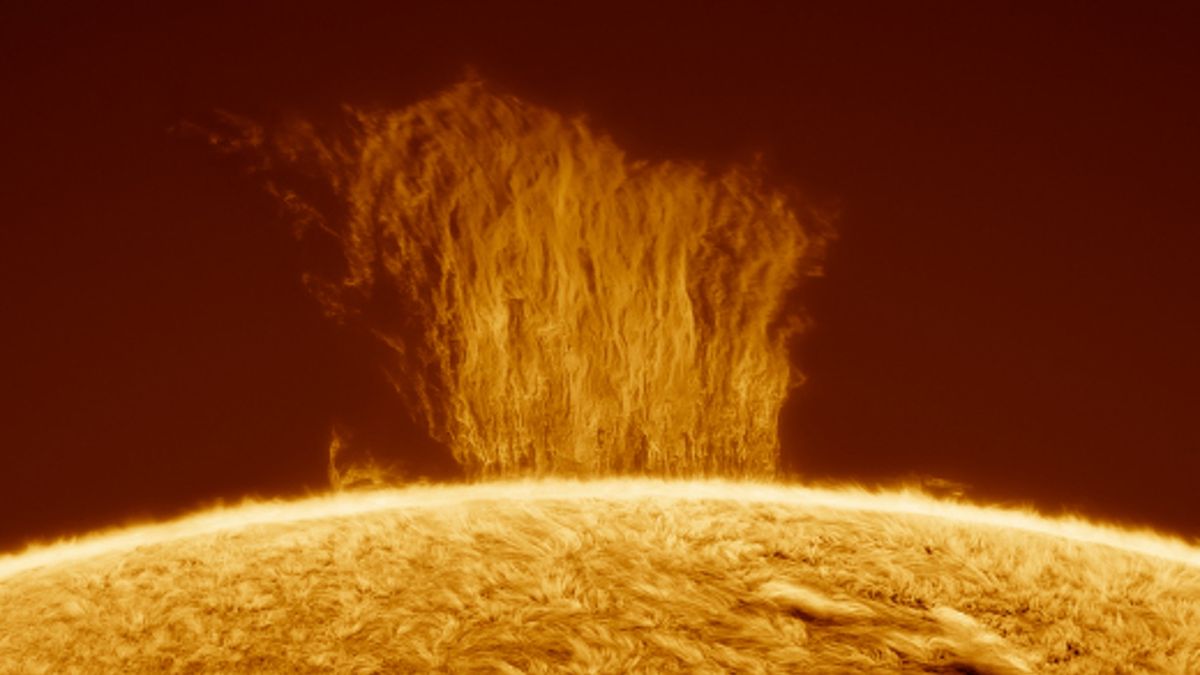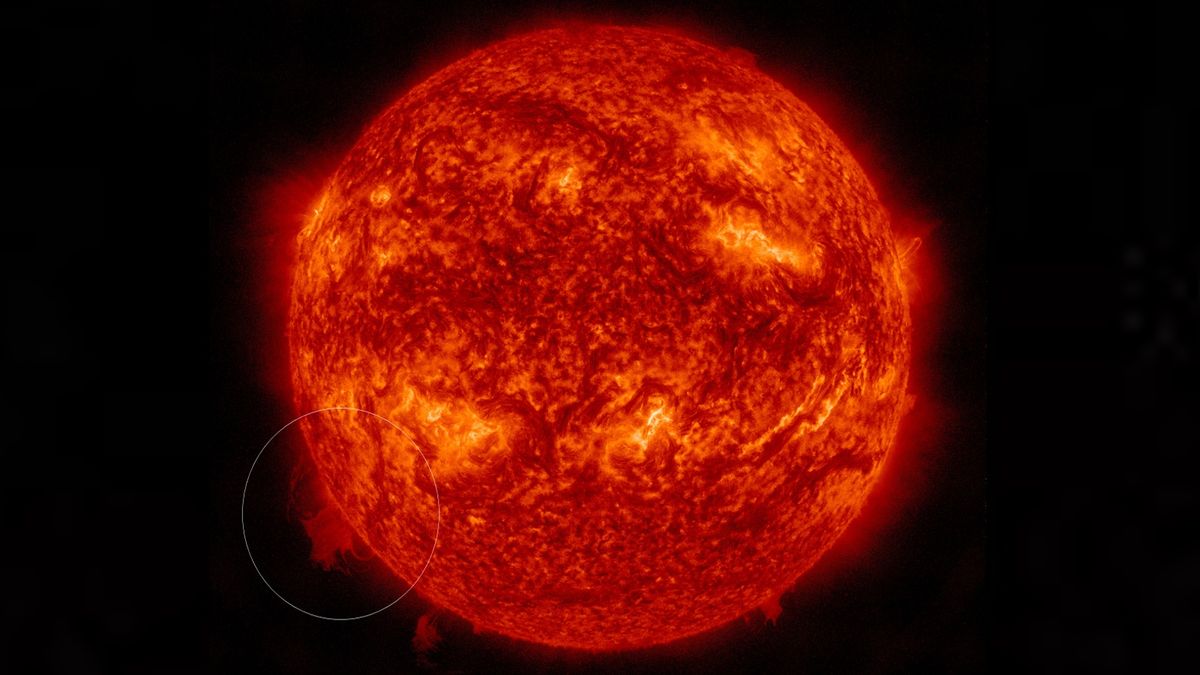60,000-mile-tall 'plasma waterfall' snapped showering the sun with impossibly fast fire [View all]
By Harry Baker published 5 days ago
A massive wall of falling plasma, known as a polar crown prominence, was recently captured in a stunningly-detailed new photo of the sun.

A close-up image of an enormous wall of falling plasma, known as a polar crown prominence, above the solar surface on March 9. (Image credit: Eduardo Schaberger Poupeau)
An astrophotographer has snapped a stunning shot of an enormous wall of plasma falling down toward the solar surface at impossibly fast speeds after being spat out near the sun's south pole.
Eduardo Schaberger Poupeau, who is based near Rafaela in Argentina, captured the striking image on March 9 using specialized camera equipment. The plasma wall "rose some 100,000 km [kilometers, or 62,000 miles] above the solar surface," Poupeau told Spaceweather.com. For context, that is as tall as around eight Earths stacked on top of one another. "On my computer screen, it looked like hundreds of threads of plasma were dripping down a wall," Poupeau added.
The dazzling phenomenon is known as a polar crown prominence (PCP), according to Spaceweather.com. PCPs are similar to normal solar prominences, which are loops of plasma, or ionized gas, that are ejected from the solar surface by magnetic fields. However, PCPs occur near the sun's magnetic poles at latitudes between 60 and 70 degrees North and South, which often causes them to collapse back towards the sun because the magnetic fields near the poles are much stronger, according to NASA. This collapse back to the sun has earned them the nickname "plasma waterfalls."

An image of the sun captured March 10 by NASA's Solar Dynamics Observatory. The PCP is circled in the image. (Image credit: NASA/SDO)
The plasma within PCPs is not actually in freefall because it is still contained within the magnetic field that initially spat them out. However, the plasma travels downwards at speeds of up to 22,370 mph (36,000 km/h), which is much faster than the magnetic fields should allow based on experts' calculations, according to NASA. Researchers are still trying to figure out how this is possible.
More:
https://www.livescience.com/60000-mile-tall-plasma-waterfall-snapped-showering-the-sun-with-impossibly-fast-fire

